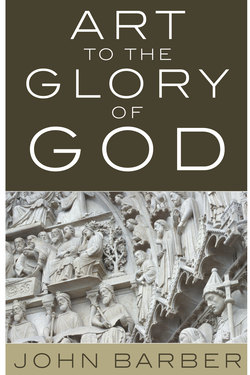Читать книгу Art to the Glory of God - John Barber - Страница 6
1 / Art to the Glory of God
ОглавлениеContemporary trends in modern art have certainly become a hot button issue. From Andres Serrano’s blasphemous Piss Christ, a large photo of a crucifix immersed in urine, to Chris Ofili’s controversial depiction of the Virgin Mary with elephant dung, to Renee Cox’s Yo Mama’s Last Supper, a five-panel photo which depicts Christ as a nude woman, there are ample reasons for Christians to be concerned about the growing irreverence in art. Moreover, both Serrano and Ofili received financial support from the United States Government (National Endowment for the Arts or NEA), a move that incensed cultural conservatives and which motivated them to put pressure on their elected officials to eliminate government funding for the NEA. We have also heard of the publicly funded art exhibition at the Gallery of Modern Art in Glasgow, Scotland where many visitors wrote blasphemous comments and obscenities across the pages of a displayed copy of the Bible. The exhibit also includes a video of a woman tearing pages from the Bible and stuffing them into her bra, knickers, and mouth.
While it is tempting to follow other writers who have detailed many examples of sacrilegious art and suggest ways in which the Church can fight to eliminate them, I have chosen to take a different direction. The reason is because the above discussion, although it is important, is not about art. It is a debate over morality. As we shall soon see, ethical and moral considerations function as non-negotiable ingredients in the creation of art. Nevertheless, art must not be limited to these factors.
I dare say that most believers would have little to say about art were it not for the fact that much of it has become scandalous. But the future of art will continue to be in question if Christians remain little more than art critics. Art also calls for our positive contribution—something that requires much study and thoughtful reflection. However, the Church of today is not doing enough to offer serious reflection upon the nature of art and its role within the Christian community. The Church is producing no great artists in the line of Rembrandt, Van Gogh, or Rouault (at least none that have risen to prominence). The word “masterpiece” is missing from the vocabulary of the Church. But what is more disappointing is the reason for this failure. The Church no longer encourages great art.
The flourishing, artistic environment and the pressure to produce top-quality compositions that once gave us Michelangelo’s ceiling of the Sistine Chapel, or Giotto’s priceless fresco, The Life of St. Francis, has vanished. And, with rare exception, so has the wealth of gifted artisans that once marked the Church as the leader in the creation of magnificent works of art. But is not this failure to encourage the finest of artistic compositions the result of another more significant failure—that the Church no longer encourages great culture? Today the scandal is not the existence of outrageous art. Rather, the greater scandal is that the Church has no great art to offer in its place.
Nonetheless, this is not a new problem. It began when, after the sixteenth-century reformation of the Church, there emerged a needed and renewed zeal for the law of God. True, many blessings came to the Church as a result of its newfound commitment to the Law. However, the unfortunate by-product of people’s enthusiasm for the second commandment in particular (“Thou shalt not make for thyself an idol, or any likeness of what is in heaven above or on earth beneath or in the waters under the earth”), was an unnecessary, institutional suspicion of all art, which has lasted in many quarters to this day.
